Elizabeth Blackadder’s Cosy Cats
The delicate cat paintings of Scottish artist Elizabeth Blackadder are an absolute delight. Take a closer look at her feline friends!
Candy Bedworth 4 June 2024
The enigmatic black cat, shrouded in mystery and often associated with magic and witchcraft, has a prominent role in the realm of art. Let’s delve into how this mysterious feline has captivated renowned artists through its symbolic allure, serving as a compelling muse.
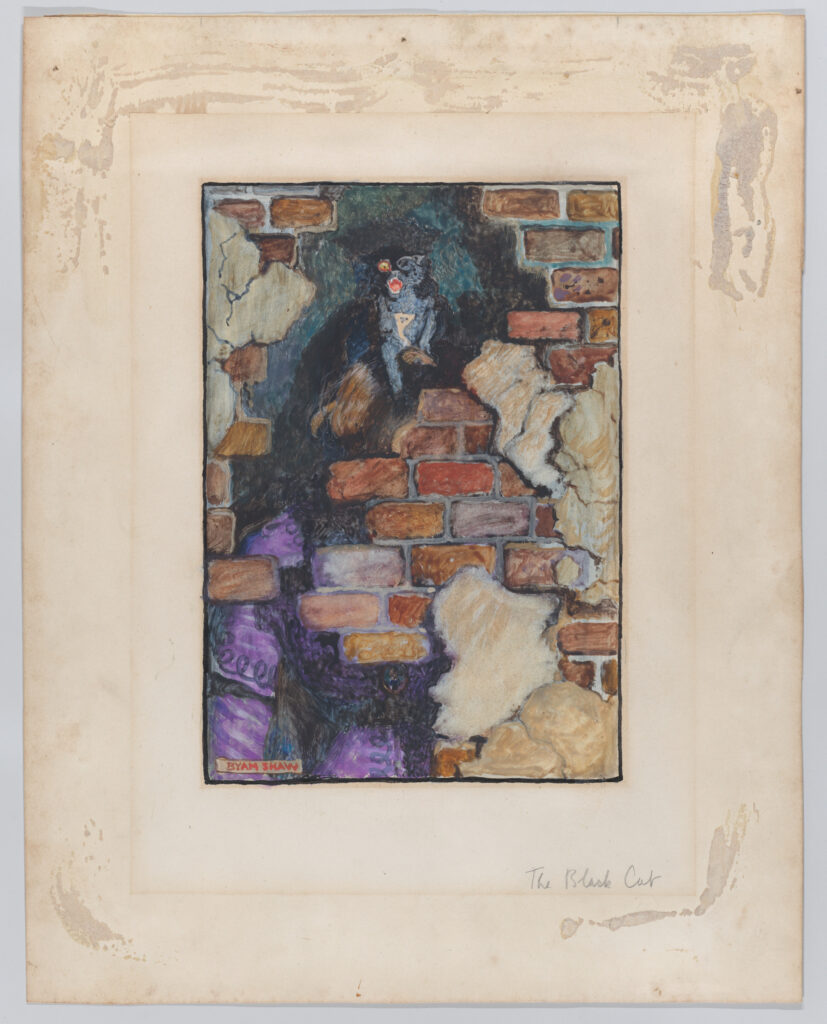
John Byam Liston Shaw, The Black Cat, for Edgar Allan Poe’s “Selected Tales of Mystery”, 1909, Metropolitan Museum of Art, New York City, NY, USA.
Born in India in 1872, Byam Shaw was an English illustrator and draughtsman who, alongside his family, relocated to England in 1878. His educational journey in Europe would eventually propel him to become a celebrated book illustrator. It was during this time that he received a significant commission to illustrate the story titled The Black Cat in the 1909 edition of Edgar Allan Poe’s Selected Tales of Mystery. The story is about a black cat which brings misfortune upon the main character, including revealing the marital murder he committed.
This illustration vividly captures the moment when the police break through the wall and discover the cat perched on the deceased wife’s head. This eerie tableau is further intensified by the cat’s disfigured face, eliciting a chilling response from the viewer.
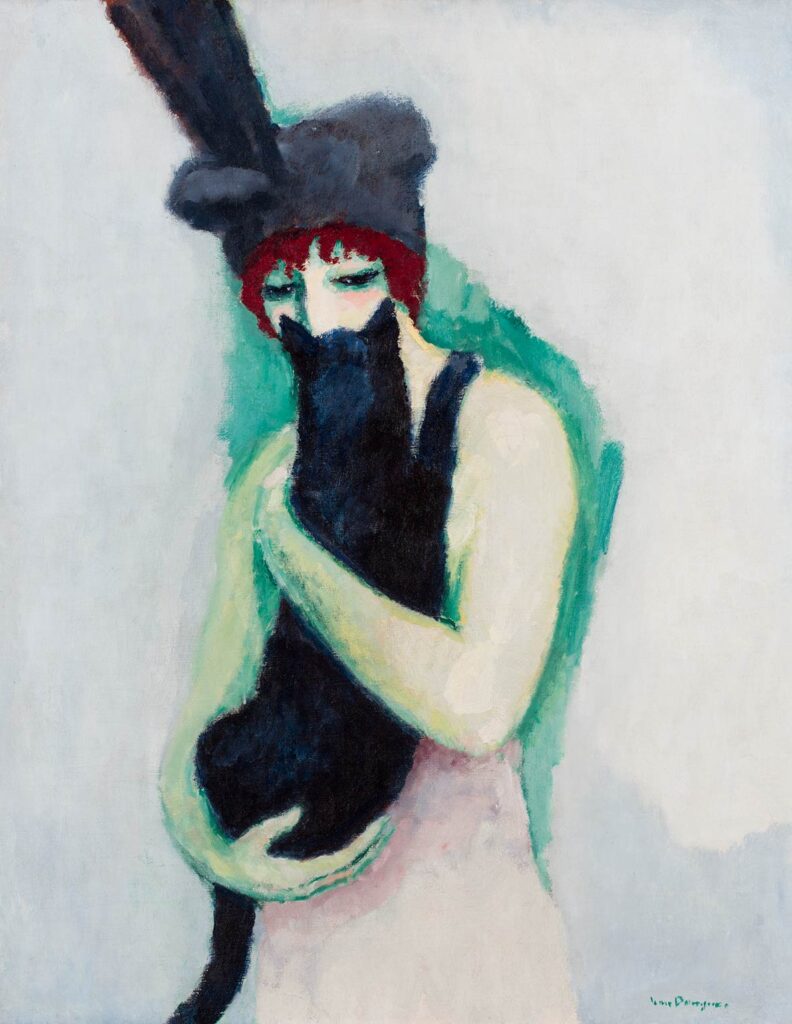
Kees van Dongen, Woman with Cat, 1908, Milwaukee Art Museum, Milwaukee, WI, USA.
Kees van Dongen was a Dutch artist and exponent of the Fauvist movement. He worked in France and was certainly an important figure in avant-garde artist circles. Here, van Dongen depicts a woman holding a black cat. The cat is turned with its back to the viewer, presumably looking towards the woman. This positioning forms an intimate bond between animal and owner, while also retaining an air of mystery. Moreover, the feline covers the lady’s half-naked body and half of her face. Furthermore, this woman is represented in a typical way for the artist, and this style is even called the “van Dongen” style, referring to this dichotomous type of woman: half princess, half prostitute.1
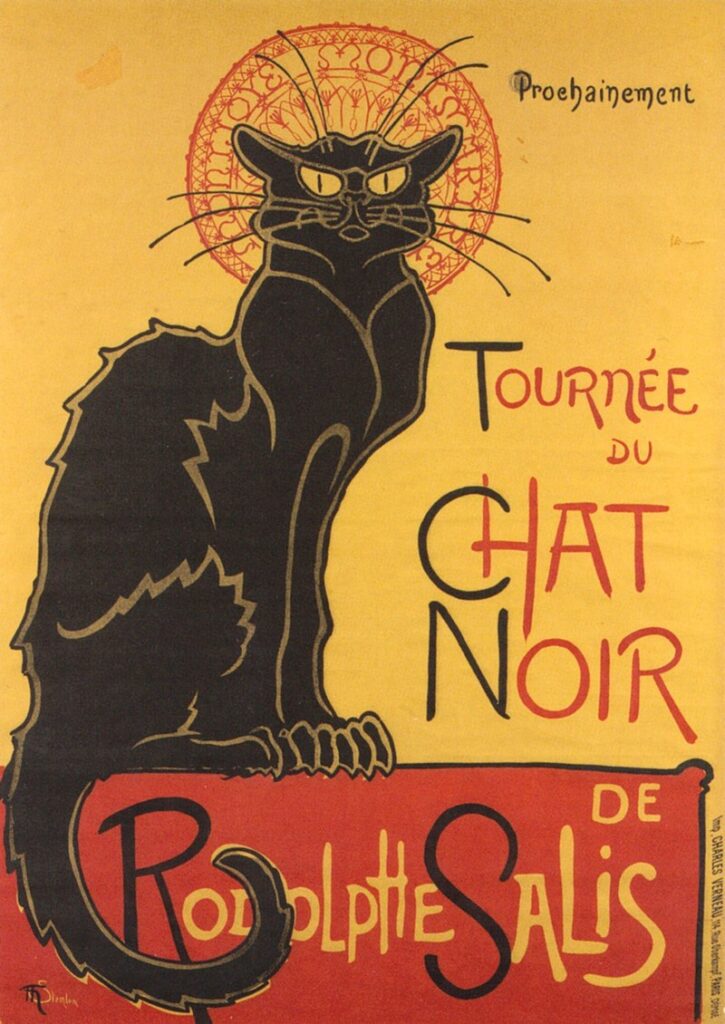
Théophile-Alexandre Steinlen, Tournée du Chat Noir de Rodolphe Salis, 1896, chromolithograph, Zimmerli Art Museum at Rutgers University, New Brunswick, NJ, USA. Wikimedia Commons (public domain).
This work is an advertisement for the cabaret Le Chat Noir. It incorporates the vibe of the club: nightlife, dance, alcohol, and modernism. Le Chat Noir opened in Montmartre, one of Paris’s most elegant neighborhoods famous for its cabarets and nightlife. It became the meeting place for progressive-minded artists of the 19th century. Subsequently, Théophile-Alexandre Steinlen, a Swiss native, was attracted to this spot. He built his career in the Le Chat Noir‘s avant-garde atmosphere. Moreover, Steinlen designed this advertisement to promote one of the cabaret’s tours. The illustration is in the Art Nouveau style, in a restrained but highly evocative color palette. Positioned like a gargoyle, the feline is depicted in a graphic style. Her vicious figure makes you want to participate in the nightlife and the avant-garde atmosphere of the cabaret!
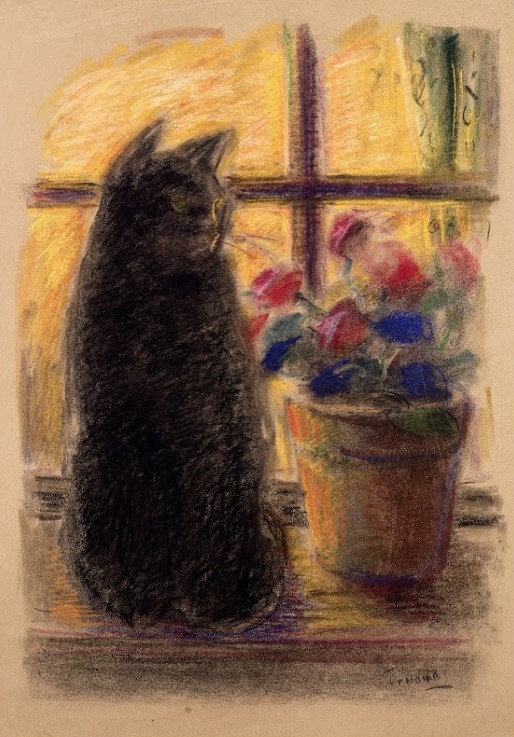
Yasushi Tanaka, Cat and Flowers, 20th century,The Museum of Modern Art, Saitama, Japan. Google Arts & Culture
In this image, we encounter the black cat as envisioned by Japanese artist Yasushi Tanaka. Born in Japan in 1886, Tanaka’s journey took him to Seattle and eventually he settled in Paris, where he established himself as a significant figure in the city’s artistic community. In Tanaka’s drawing, the black cat conveys a sense of melancholy. It perches on the outer windowsill, offering a view into a warmly-lit room. Adjacent to the cat, a pot of flowers introduces a touch of optimism to the scene. Nevertheless, the cat’s form is somewhat elusive, standing with its back to the window and gazing beyond the frame. This deliberate posture underscores an aura of mystery.
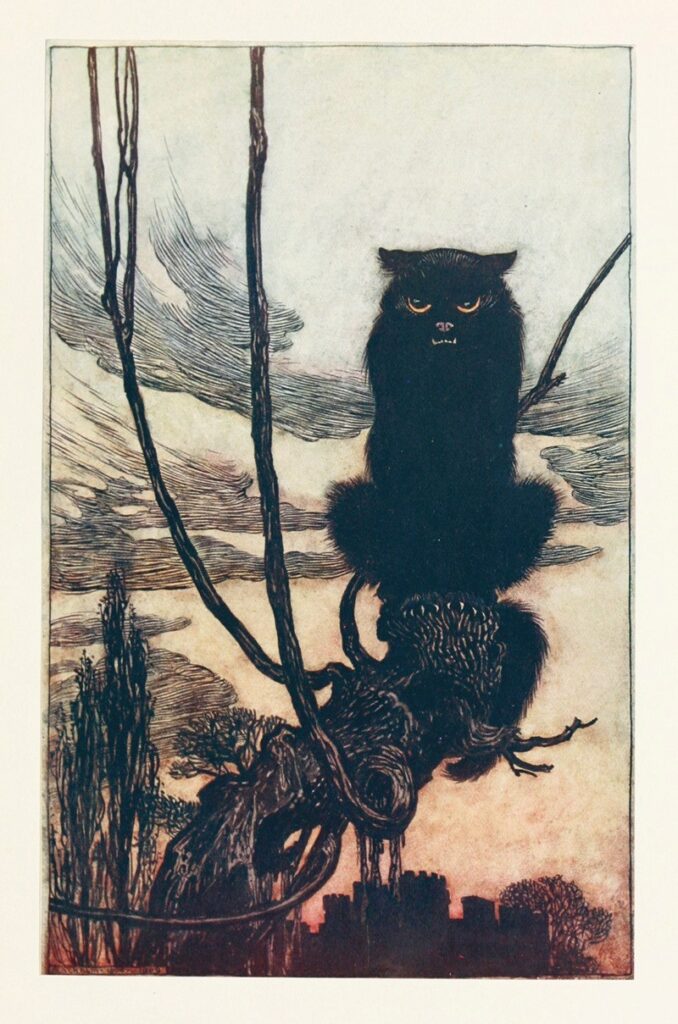
Arthur Rackham, By day she made herself into a cat, watercolors, in Grimm’s Fairy Tales, Hansel & Grethel & Other Tales, New York Public Library, New York, 1920, p. 16, via Artvee
Arthur Rackham was a prolific English illustrator. He contributed to numerous drawings for books such as Grimm’s Fairy Tales, Peter Pan in Kensington Gardens, and Alice in Wonderland. The image above is an ink drawing for Jorinde and Joringel by the Brothers Grimm, in which the eponymous characters end up being cursed by a witch. By day, the witch transforms into either a bird or a cat, so here we see the witch in cat form. Thus, the picture highlights the link between this feline and magical forces. The cat also has a frightening look, displaying visible fangs, as if about to attack.
Russell T. Clement, Les fauves : a sourcebook, London, 1994.
Tim Barringer, Not a „modern” as the word is now understood?” Byam Shaw, imperialism and the poetics of professional society, in English Art, 1860-1914: Modern Artists and Identity, Ed. By David Peters Corbett, Lara Perry, Manchester, 2000.
Russell T. Clement, Les Fauves: a sourcebook, London, 1994.
Shane Vogel, The Scene of Harlem Cabaret: Race, Sexuality, Performance, London, 2009.
Kumiko Yamada, Yasushi Tanaka and Joyce’s Encounters with Japan in Paris, in Journal of Irish Studies, vol. 17, 2002, pp. 151–61. JSTOR, http://www.jstor.org/stable/20533492., Accessed 1 November 2023.
Stephen Bury, Benezit Dictionary of British Graphic Artists and Illustrators, Volume 1, Oxford, 2012.
DailyArt Magazine needs your support. Every contribution, however big or small, is very valuable for our future. Thanks to it, we will be able to sustain and grow the Magazine. Thank you for your help!